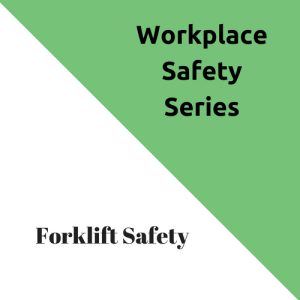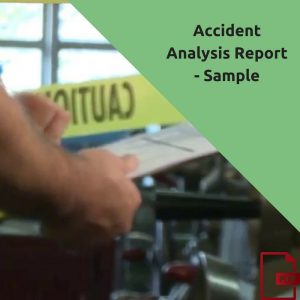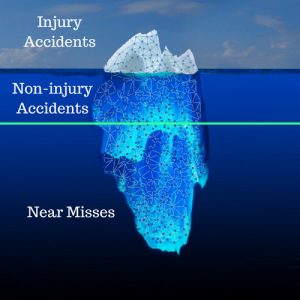Property Damage – Accident Investigation Form
 Many times when an accident occurs that is just property damage, it is overlooked in the investigation process, because no injury occurs. That is actually a root cause of an injury accident, because if property damage was investigated thoroughly, it could identify issues that if events were different could have resulted in an injury.
Many times when an accident occurs that is just property damage, it is overlooked in the investigation process, because no injury occurs. That is actually a root cause of an injury accident, because if property damage was investigated thoroughly, it could identify issues that if events were different could have resulted in an injury.
When doing a property damage investigation, it should be treated equally to an injury accident, this includes conducting a root cause.
If your employees aren’t trained on root cause analysis, check out the training presentation here. This training explains how to find the root cause of every incident, which can mitigate future incidents.
Don’t overlook my book on Root Cause Analysis available for sale on Amazon
Other forms you want to include in a property damage investigation:
Check out all other incident investigation forms available
A property damage investigation can be difficult, as not all property damage is reported, which means occasionally an investigation is conducted without a witness, without an involved party, and very few facts. In the event of this, an investigation should still be conducted, using the best information available.
A good defense against this type of investigation is a safety rule that if accidents are reported, it will result in no punishment. Many companies don’t wish to put that clause into employee rules, for fear they can not discipline employees for horseplay that results in property damage, but that isn’t true, as if horseplay is against the rules, you won’t be documenting them for the accident, but rather the horseplay. This encourages employees to come forward when an accident results in property damage that is a result of improper setup, or lack of training, therefore assisting in investigations to negate these accidents from occurring.


 With nearly 100,000 injuries or fatalities due to forklift accidents in the U.S. each year, proper training is a critical part of forklift safety. Forklifts present a unique workplace hazard for many reasons: they weigh at least double the weight of the average car, they carry very heavy loads at heights, they work in areas close to people and other equipment, and they steer from the rear. It’s estimated that proper training can help prevent 70% of forklift accidents. To ensure that all operators are sufficiently skilled and knowledgeable, training standards are set by the Occupational Health and Safety Administration (OSHA) in the U.S. and the Canadian Standards Association (CSA) in Canada.
With nearly 100,000 injuries or fatalities due to forklift accidents in the U.S. each year, proper training is a critical part of forklift safety. Forklifts present a unique workplace hazard for many reasons: they weigh at least double the weight of the average car, they carry very heavy loads at heights, they work in areas close to people and other equipment, and they steer from the rear. It’s estimated that proper training can help prevent 70% of forklift accidents. To ensure that all operators are sufficiently skilled and knowledgeable, training standards are set by the Occupational Health and Safety Administration (OSHA) in the U.S. and the Canadian Standards Association (CSA) in Canada.
 An accident analysis report should be conducted for every accident, but also conducting an accident analysis for a near miss will create a safer workplace. It may seem excessive to treat every near miss as a full accident, but a near miss is just an accident where someone didn’t happen, this time.
An accident analysis report should be conducted for every accident, but also conducting an accident analysis for a near miss will create a safer workplace. It may seem excessive to treat every near miss as a full accident, but a near miss is just an accident where someone didn’t happen, this time. More incidents and observations mean more data to analyze
More incidents and observations mean more data to analyze












